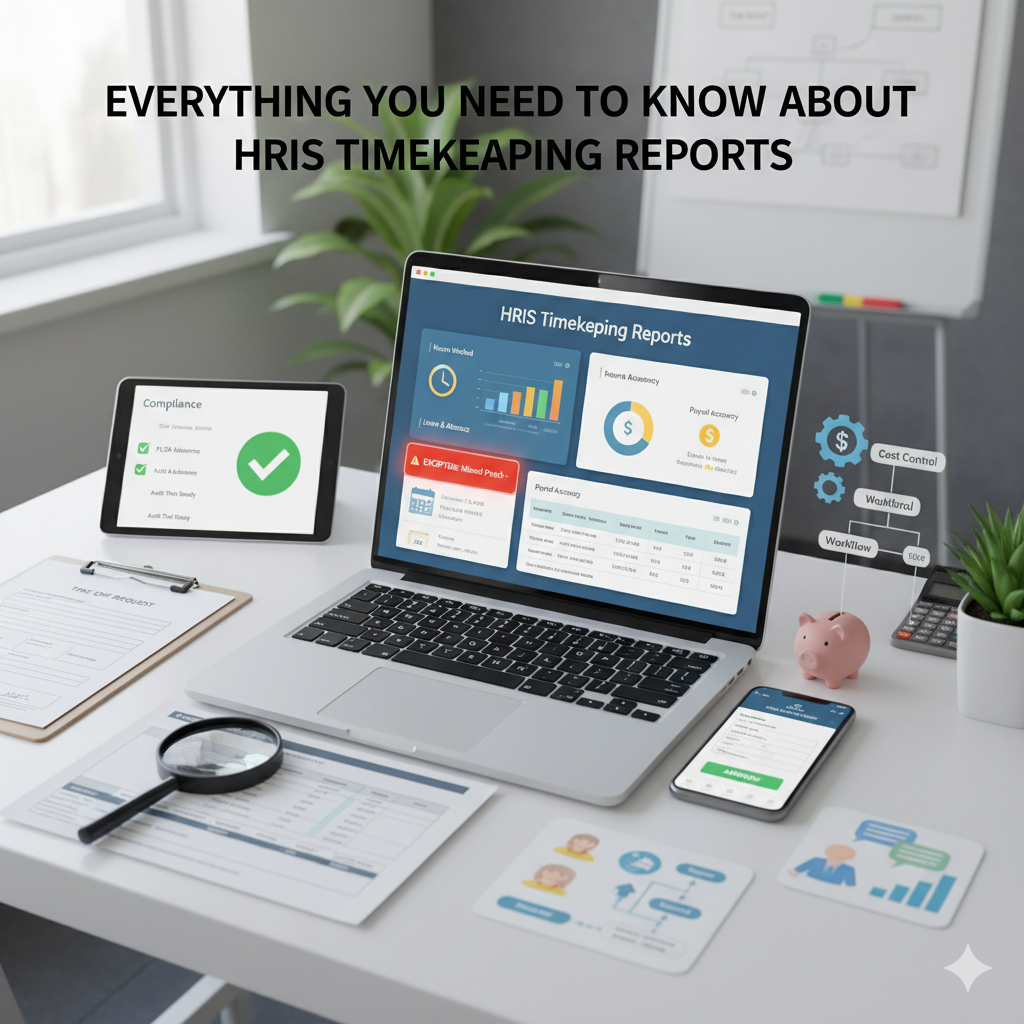Address
Kaypian, San Jose Del Monte City, Bulacan Philippines
Work Hours
Monday to Friday: 8AM - 6PM
Weekend: 10AM - 5PM
Address
Kaypian, San Jose Del Monte City, Bulacan Philippines
Work Hours
Monday to Friday: 8AM - 6PM
Weekend: 10AM - 5PM


Integrated HR. Accurate Payroll.


Integrated HR. Accurate Payroll.

In today’s fast-paced work environment, efficient timekeeping and workforce management are critical to business success. Gone are the days of manual timecards and spreadsheets — modern organizations now rely on HRIS (Human Resource Information System) timekeeping reports to manage attendance, streamline payroll, and enhance decision-making.
In this article, we’ll explore what HRIS timekeeping reports are, why they matter, and how they can transform your HR operations for maximum efficiency.
HRIS timekeeping is a digital system that tracks and records employee work hours, attendance, and leave data within a centralized platform. Integrated into an organization’s Human Resource Information System, it ensures accuracy, compliance, and real-time reporting.
A robust HRIS timekeeping system typically includes:
HRIS timekeeping reports are detailed summaries of employee time data, automatically generated by your HRIS platform. These reports provide insights into attendance patterns, overtime trends, productivity levels, and payroll accuracy.
Common types of HRIS timekeeping reports include:
Accurate timekeeping reports are not just administrative tools — they are strategic assets. Here’s why:
To make your reports actionable, ensure they track these essential timekeeping KPIs:
| Metric | Purpose |
| Total Hours Worked | Determines productivity and pay accuracy |
| Overtime Hours | Monitors workload and compliance |
| Absenteeism Rate | Identifies attendance issues |
| Leave Utilization | Tracks use of vacation and sick leave |
| Punctuality | Measures employee timeliness |
| Labor Cost per Hour | Evaluates financial efficiency |
When selecting an HRIS with strong timekeeping features, look for systems that offer:
✅ Cloud-based accessibility
✅ Mobile app for employee clock-ins
✅ Real-time analytics and reporting
✅ Payroll integration
✅ Customizable report templates
✅ Data security and compliance features
| Challenge | Solution |
| Inaccurate clock-ins | Use biometric or geolocation-based attendance tracking |
| Complex data exports | Automate report generation and integration |
| Employee resistance | Provide training and emphasize transparency |
| Compliance risks | Enable real-time alerts for overtime and missed breaks |
As technology evolves, AI-powered timekeeping and predictive analytics are set to redefine workforce management. Future HRIS systems will automatically detect attendance anomalies, predict staffing needs, and offer personalized insights for employees and HR teams alike.
HRIS timekeeping reports are the backbone of efficient HR operations — combining automation, accuracy, and analytics to deliver smarter workforce insights. Whether you’re a small business or a large enterprise, investing in a robust HRIS system ensures compliance, improves payroll accuracy, and boosts overall productivity.
If your organization still relies on manual timesheets, now is the time to make the switch. The future of HR lies in data-driven time management — and HRIS timekeeping reports are your gateway to it.